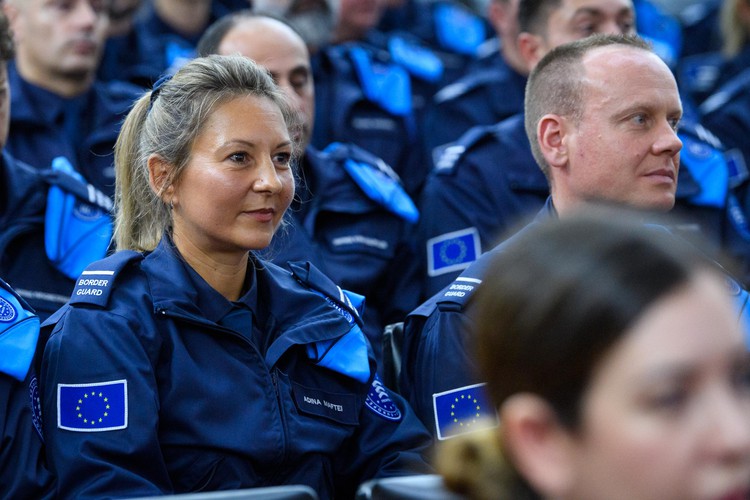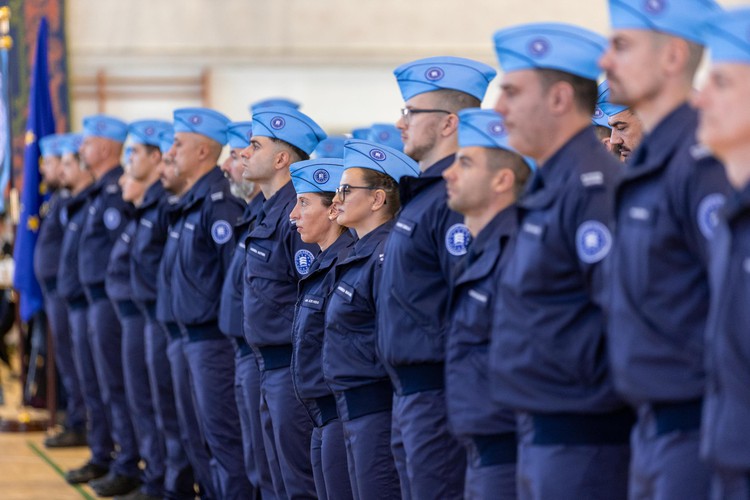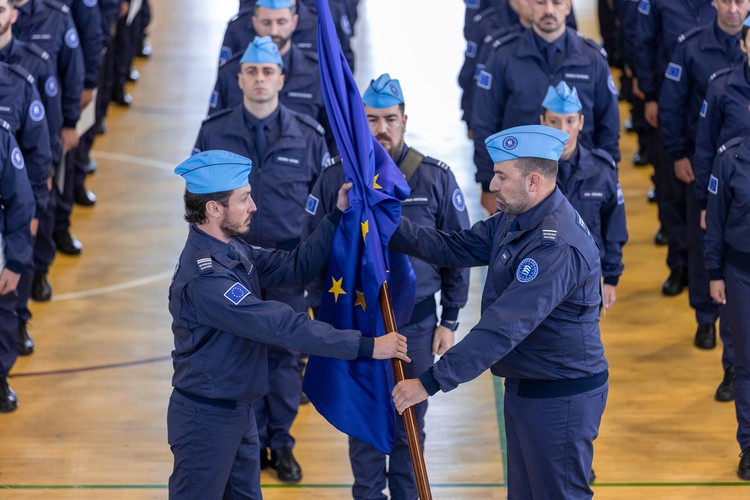This week, 323 standing corps cadets graduated from their
basic trainings in Avila, Spain and Lisbon, Portugal.
The newly graduated officers are now fully-fledged members
of the European standing corps and will soon join their colleagues already
working all along EU’s external borders and in non-EU countries. There are
currently about 2000 Frontex staff and officers working at the external borders,
taking part in 18 operations.
Frontex Executive Director a.i. Aija Kalnaja attended both
graduations and warmly congratulated the officers for completing the demanding
training programme.
The graduation ceremony in Lisbon was accompanied by a
conference on the recent challenges at EU’s external borders which gathered
high-level representatives from EU and national authorities. EU Commissioner
for Home Affairs, Ylva Johansson, addressed the officers in a video message and
thanked them for their readiness to secure EU’s external borders.
In Avila, the graduation ceremony took place in the academy
of the Spanish Police in the presence of high-ranking officials from service,
including its General Director, Mr. Francisco Pardo Piqueras.
The basic training aims to ensure that members of the
standing corps have the necessary theoretical and practical competences,
including in relation to the prevention of violence and use of force, to
operate in a unitary manner in any particular operational area.
The officers will wear blue uniforms that represent the
entire European Union and protect the European area of freedom, security and
justice.
Standing corps explained
The European Border and Coast Guard standing corps helps
make the Schengen Area, the largest free travel area in the world, stronger and
more resilient.
The standing corps includes Frontex personnel and officers
who are sent from the Member States to the agency on long- or short-term
missions, as well as a reserve that can be activated in times of crisis. The
corps began operating in 2021 and will grow to up to 10,000 officers by 2027.


